If you are a vegetable gardener like me, you are more than likely to have many vegetables growing in your garden. How do you keep track of when to fertilize each types of vegetable? Should all vegetables be fertilized the same way at the same time? If you wonder what’s the best fertilizer for garden, you may find a list of generic 5-10-10 or 5-5-5 fertilizers. Those are good fertilizers for garden overall, but are those fertilizers really best for each vegetable you are growing? Where can you find vegetable fertilizer requirements for each individual vegetable variety?
Here is a handy reference chart to look up the recommended fertilization schedule for the most commonly grown home vegetables by seasons. You can print it out before each season and note down the dates of each fertilizer application for future reference.
Bookmark this page for frequent referencing.
The most frequently asked questions in any vegetable gardener group are: what is the best vegetable garden fertilizer and how to use it. But even more important question should be WHEN to fertilize each vegetable.
This article answers all three questions:
- What is the best vegetable garden fertilizer?
- How to apply vegetable fertilizer in the garden?
- When to fertilize various vegetable plants?
Before we jump to the above topics, let’s first understand what a fertilizer is and how it is different from soil amendments.
Difference between Fertilizers and Soil Amendments:
Fertilizers:
Just like humans need Protein, Fat, and Carbohydrates for energy and survival, plants need Nitrogen (N), Phosphorus (P), and Potassium (K) for growth and fruit production. Out of 17 required nutrients for the plant’s survival, these three macro-nutrients are the most important ones.
Nitrogen (N): Nitrogen is responsible for the leaf and stem growth of a plant. It helps the plant produce new cells, enzymes, and green pigments of the leaves.
Phosphorus (P): Phosphorus is crucial in the photosynthesis process – a process by which plant converts solar energy into consumable chemical energy. It also helps in root growth and flower production.
Potassium (K): Potassium is essential for the plant’s overall health and immunity. It also helps in flower and fruit production.
The N-P-K number on the fertilizer package represents the percentage of each of this macro-nutrient is in the bag. For example, the N-P-K value of 2-6-3 means the package’s total weight contains ingredients that make up for 2% Nitrogen, 6% Phosphorus, and 3% Potassium.
Soil Amendments:
No amount of fertilizer can beat the value of having a nutrient-rich, well-drained soil in the first place.
The native soil needs to be improved with a few other things to make it more fertile and suitable for vegetable plants. These additives increase the amount of organic matter in the soil and add many micro-nutrients for the plants. These micro-nutrients are like multi-vitamins for the plants. They help boost the health and immunity of the plant and increase the sugar content of the fruits.
Some of the soil amendments highly recommended for the vegetable garden are:
Composted Cow manure: It adds a large amount of organic matter to the soil and increases the soil’s moisture-holding capacity.
Earthworm castings: Earthworm castings is loaded with organic matter and adds tons of micro-organisms to the soil. It is one of the best natural vegetable fertilizer. It helps the plants in flower production and boosts the immunity to fight diseases. Here is a list of 10 benefits of worm castings for your garden.
Rock dust: Rock dust adds micronutrients like Magnesium, Iron, Calcium, etc. which are essential for healthy plants. It also improves soil structure.
Bone Meal: Bone Meal is an organic soil amendment that provides a high amount of Phosphorus (P), which is required to produce strong roots. It is highly beneficial for root vegetables like Beets and Carrots. Bone meal also provides Calcium and other micronutrients.
| Soil Enhancer | Amazon (USA) | Amazon (Canada) | Amazon (UK) |
| Worm Castings | Wiggle Worm Soil Builder | Gaia Green Worm Casting | Baltic Worm Castings – Pure Vermicompost |
| Rock Dust | Root Naturally Azomite Rock Dust | Gaia Green Glacial Rock Dust | |
| Bone Meal | Miracle-Gro Nature’s Care Organic Bone Meal | Jobe’s Organics Bone Meal Soil Additive | Eazifeed Ready To Use Bonemeal |
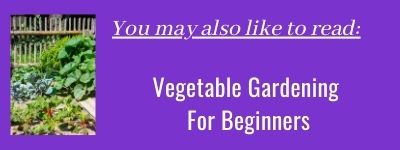
So you may wonder, if the garden soil is amended with the organic matter, do you still have to fertilizer the vegetable plants?
Do you need to fertilize vegetable garden?
Yes! Vegetable plants, especially the summer vegetables, need a consistent supply of nutrients to grow and produce harvest over the entire season. Even the soil that is amended with the organic matter at the beginning of the season starts to diminish when the vegetable plants begin to bloom and produce fruits. At that time, the soil needs additional doses of macro-nutrients in the form of fertilizer to continue supporting the plant’s growth and production.
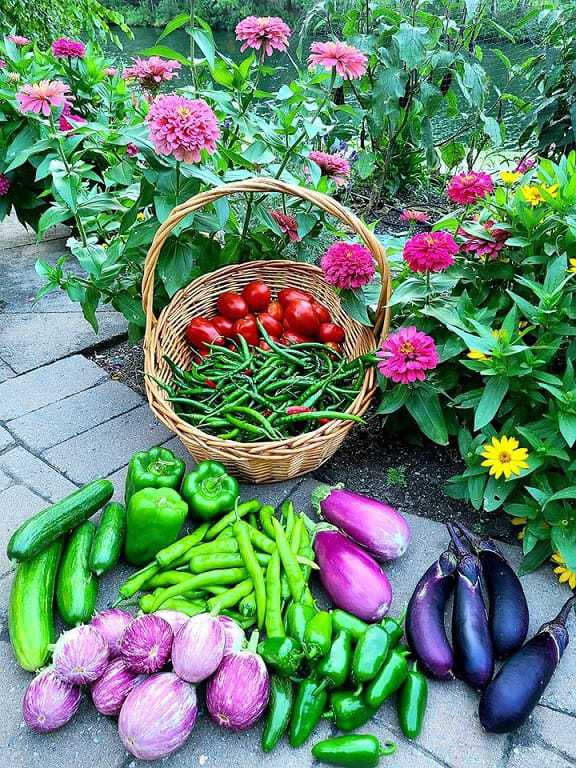
Do you know what is so special about the above picture of my typical summer harvest (twice a week)? This entire harvest came from only 1 plant of each vegetable variety (except thin Chilies in the basket- which came from 2 plants).
The secrets of these highly fruitful plants are (i) investment in building high quality soil, and (ii) the timely fertilization application based on individual plant requirements.
What is the best vegetable garden fertilizer?
Have you found yourself standing in front of the fertilizer aisle of a home improvement store and wonder which is the best fertilizer for your vegetable garden? Each brand and variety has a different configuration of N-P-K value. Which fertilizer is right for the type of vegetables you are growing in your garden?
Well, there is no particular fertilizer that is suitable for all vegetables. Based on the growth stage of the plant, the nutrient requirement of the plant changes. For example, Tomato plant benefits form all-purpose fertilizer at the beginning stage when it is growing leaves as well as growing deeper roots. But once the flower starts to form on the plant, it needs high Phosphorus (P) fertilizer to encourages more fruits to form on the plant.
I recommend starting with three types of fertilizers for vegetables. In combination, they can be used for most of the vegetables in the garden. Two of the fertilizers are in granular form, which slowly breaks down over time and releases the nutrient over the long term. The third one is a liquid fertilizer, which provides an immediate boost for the plants when applied.
Pick one of the All-Purpose fertilizers, one of the high Phosphorus (P) fertilizers and one of the Liquid or water soluble fertilizers of you choice to fertilize all vegetables in your garden during different growing stages.
All-Purpose Fertilizer (Granular):
This fertilizer has the same amount of Nitrogen (N), phosphorus (P), and Potassium (K) in the package. N-P-K number on the bag may look like 4-4-4, 10-10-10 or 20-20-20. All-purpose fertilizer helps the plant in overall growth – grow taller in size, develop deeper roots, and encourage to produce flowers and fruits. I recommend using 5-5-5 fertilizer for vegetables at the planting time.
Best Organic All-purpose Fertilizer:
- For Vegan gardeners (who do not want to use any fish, bone or blood based fertilizers) Neptune’s Harvest Kelp Meal Multi-Purpose Plant Food can be used.
High Phosphorus (P) Fertilizer (Granular):
This fertilizer has a high P-value than the other two components. N-P-K number on the package may look like 2-4-3, 5-8-6, or 10-15-10. This fertilizer encourages stronger roots and plentiful fruit development. Vegetables that are grown for their roots and fruits greatly benefit from periodic applications of high Phosphorous (P) fertilizer. Many gardeners also prefer to use 5-10-10 fertilizer for more fruit and flower production.
Best High Phosphorus (P) Fertilizers
- For Vegan gardeners: Down to Earth Organic Vegan Fertilizer can be used.
- For container grown vegetable plants, Jobe’s Organics Vegetable & Tomato Fertilizer Spikes can be used instead of a granular fertilizer.
Liquid Fertilizer:
In addition to the above two fertilizers, make sure to have one of the liquid fertilizers below in your arsenal. Liquid fertilizer can easily be absorbed by the soil, and are readily available for the plants to consume. For that reason, liquid fertilizers are beneficial for young and distressed plants. Also, liquid fertilizer can be used as a foliar application through a sprayer. The leaves absorb the nutrients right away, and the effect could be quite immediate. N-P-K number can vary for the liquid fertilizer.
Best Liquid Fertilizers
- For Vegan gardeners: Neptune’s Harvest Seaweed Fertilizer can be used.

When to fertilize vegetable garden?
Deciding when to apply fertilizers to vegetable plants are sometimes more critical than the fertilizer choice itself. In general, most of the vegetable plants benefit from a fertilizer application at the time of the transplanting or soon after when the plant is few inches tall. Depending upon the vegetable type, it may need upfront soil amendments or supplemental fertilizer applications later in the season to perform optimally.
Before deciding when and how to fertilize the vegetable plants, general familiarity with the types of vegetables and how they grow is highly recommended.
How to use vegetable Garden Fertilizer chart:
The fertilizer schedule is divided into two parts: One for the cool-season vegetables and the other for the warm-season vegetables. Buy one of the All-purpose fertilizers, one of the high (P) fertilizers, and one of the liquid fertilizers.
- Before planting anything in the vegetable garden, print out this schedule at the beginning of the season.
- Locate the vegetable you want to grow in the table, and follow the fertilizer guidelines throughout the season.
- After each application, you can note down the date of the fertilizer application in the space provided below each cell. This record-keeping helps reduce accidental over-fertilization or skipped applications.
- Some vegetables require upfront soil preparation by mixing soil amendments and/or fertilizers before planting. For those vegetables, apply the mentioned items from the first column 2 weeks before sowing the seeds or transplanting the seedlings. Thoroughly rack the top 6” of soil to mix the components well with the soil.
- For granular fertilizers: Read the package direction for the recommended amount. Spread recommended quality in a 6” circle at the base of the plant. Gently mix the granules with the soil by ruffling the top layer. Water the plant immediately after application.
- For liquid fertilizer: Mix the fertilizer with water as directed on the package. Slowly pour two to three cups of the mixture near the base of the plant. Skip the regular watering for the day when liquid fertilizer is applied. Leave at least one week of a gap between granular and liquid fertilizer applications. Do not use both types of fertilizers to the same pant in the same week.
- N/A means there is no need to add any fertilizer during that phase of the plant’s growth.
Cool Season Vegetable Fertilizer Schedule
| Vegetable | 2 Weeks Before Planting | At Transplanting | During Initial Growth | When Flower/Fruit Appear | During The Rest Of The Season |
| Beets | Apply Manure and Bone Meal to soil | N/A | High (P) fertilizer when plants are 4 to 5“tall | N/A | N/A |
| Broccoli | N/A | All-Purpose fertilizer when transplanting | All-Purpose fertilizer when plant is 4” tall | High (P) Fertilizer when head starts to form | N/A |
| Cabbage | N/A | N/A | Liquid fertilizer | High (P) Fertilizer when head starts to form | N/A |
| Carrots | Apply Bone Meal to soil | N/A | High (P) fertilizer when plants are 4 to 5“tall | N/A | N/A |
| Cauliflower | N/A | All-Purpose fertilizer when transplanting | N/A | High (P) Fertilizer when head starts to form | N/A |
| Leafy Greens | N/A | N/A | All-Purpose fertilizer when plant is 4” to 6” tall | Liquid fertilizer | Liquid fertilizer |
| Leaf Lettuce | N/A | N/A | Liquid fertilizer | Liquid fertilizer after first harvest | Liquid fertilizer after second harvest |
| Peas | Apply High (P) fertilizer | N/A | N/A | N/A | N/A |
| Potatoes | Apply Compost or Manure to soil | N/A | High (P) fertilizer before second healing | High (P) fertilizer when flowers are blooming | N/A |
| Radish | Apply Bone Meal to soil | N/A | N/A | N/A | N/A |
| Spinach | N/A | N/A | All-Purpose fertilizer leaves are 4” tall | All-Purpose fertilizer first harvest | All-Purpose fertilizer after second harvest |
Warm Season Vegetable Fertilizer Schedule
| Vegetable | Before Planting | At Transplant | During Initial Growth | When Flowers Appear | During The Rest Of The Season |
| Beans | Mix High (P) fertilizer | N/A | N/A | N/A | N/A |
| Corn | Mix Manure and All-Purpose fertilizer with soil | N/A | All-Purpose fertilizer when plants are 4”-6” tall | All-Purpose fertilizer when corn tassels appear | N/A |
| Cucumber | N/A | N/A | High (P) fertilizer when vine start to branch out | High (P) fertilizer when first flowers set | Repeat High (P) fertilizer every 6 weeks |
| Eggplant | N/A | All-Purpose fertilizer when transplanting | Liquid fertilizer every 2 weeks | High (P) fertilizer when flowers start to appear | Repeat High (P) fertilizer every 6 weeks |
| Gourds | N/A | All-Purpose fertilizer when transplanting | High (P) fertilizer when plants are 8”-10” tall | High (P) fertilizer when flowers start to appear | Repeat High (P) fertilizer every 6 weeks |
| Herbs | N/A | N/A | Liquid fertilizer when plants are 4” tall | Liquid fertilizer 4 weeks after the last application | N/A |
| Okra | All-Purpose fertilizer (if sawing seeds) | All-Purpose fertilizer (if transplanting) | High (P) fertilizer when plants are 4”-6” tall | High (P) fertilizer when flowers start to appear | Repeat High (P) fertilizer every 6 weeks |
| Pepper (Large) | N/A | All-Purpose fertilizer when transplanting | Liquid fertilizer every 2 weeks | High (P) fertilizer when flowers start to appear | Repeat High (P) fertilizer every 6 weeks |
| Pepper (Small) | N/A | All-Purpose fertilizer when transplanting | Liquid fertilizer every 2 weeks | High (P) fertilizer when flowers start to appear | Repeat High (P) fertilizer every 6 weeks |
| Squash | N/A | High (P) fertilizer when transplanting | High (P) fertilizer when plants are 4”-6” tall | High (P) fertilizer when flowers start to appear | Repeat High (P) fertilizer every 6 weeks |
| Tomato | N/A | All-Purpose fertilizer when transplanting | Liquid fertilizer every 2 weeks | High (P) fertilizer when flowers start to appear | Repeat High (P) fertilizer every 6 weeks |
Download Vegetable Garden Fertilizer Chart:
A downloadable and printable fertilizer chart is coming soon. Stay tuned…
Tips for fertilizing vegetable plants:
1. Do Soil test
Most of the local university extension or community provides a low-cost soil testing for the home gardeners. Or do it yourself with a Soil pH Test Kit. Do soil test of the vegetable garden at least once every two years to understand the soil structure and nutrient properties of the soil. This will provide specific details of nutrients lacking from the soil and how to amend them.
2. Always follow label direction:
Each brand and each variety of fertilizers require a different rate of application. Read the package label and follow the direction. Skipping this part can lead to plant burn, which may cause stunted growth or dead plant.
3. Side dress the fertilizer
Always apply granular fertilizer 4” to 6” away from the plant base. This ensures the roots do not come in direct contact with the fertilizer.
4. Don’t overfeed
In regards to fertilizers, more does not mean better. Always air on the side of caution- apply as directed on the package or less.
5. Don’t feed before rain
The heavy rain can wash away the fertilizer and pollute the water reservoirs. Wait for the clear day before applying fertilizer.
6. Don’t feed when the temperature is too high
While plants are struggling to survive through heat, do not overstress them by feeding fertilizers. Wait till the day time temperature comes back below 90F.
7. Water the plants after fertilizing with granular fertilizers
Granular fertilizer cannot start to provide value to the plant until melted by water. Watering after fertilizer also helps prevent the fertilizer burns on the plant roots.
8. Keep fertilizer stored in a secure place
Always store fertilizer package in a cool, dry location, away from direct sunlight and humidity. Also, keep it out of the reach of children and pets.
8. Adjust the fertilizer frequency
Plants growing in pots or elevated raised garden beds may need more frequent fertilization than the plants growing on the ground.
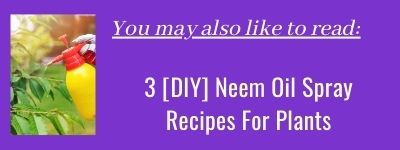
Summary:
Different vegetable plants require a different type of nutrient during various stages of the growth cycle. It is essential to understand when and how to fertilize each vegetable plant.
Providing the right nutrients at the right time is the key to having a productive and healthy vegetable garden- which can be the envy of your neighborhood!
If you find the information helpful, please share this article using social media buttons below the article.
Question? Comment? Want to help?
If you have any questions regarding fertilizing vegetable plants or any other vegetable gardening matter, leave a comment below or connect with me on Pinch of seeds group on Facebook. You can ask questions, give feedback, post a picture for photo consultation, and interact with other gardeners.
If you find this information helpful, don’t keep it to yourself! Share the link to this article on your Facebook page or gardening group. Your fellow gardeners will thank you for it!
Last updated: 03/25/2021
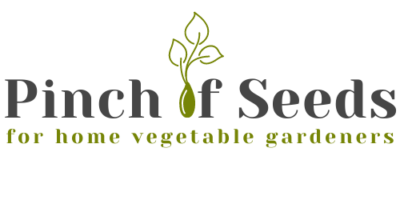
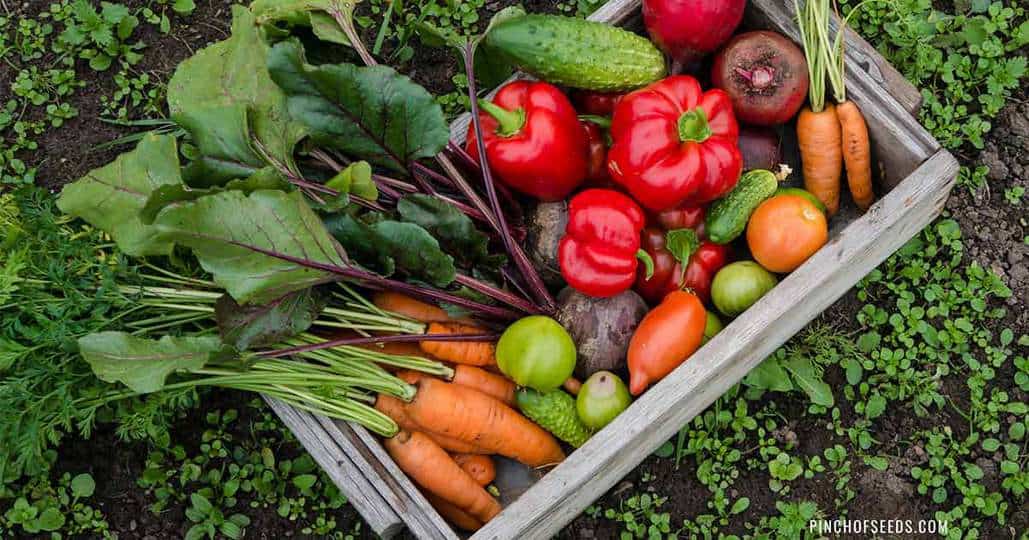
Nice Chart. What is the “second healing” mentioned with potatoes?
Hi Ivan!
The potatoes are growing in stages. The first couple of rounds of leafy growth is covered with soil, which is called ‘hilling’.
-Gopi
Thank you for sharing this useful information in such a concise and practical way!
Saved time making a fertilizer shopping list.
This is site with amazing and simplified for beginners. Thank you so much
Thank you for you kind words, Jigisha!
-Gopi
Hi Gop. Using your fertilizer schedule now in Idaho. What is the difference between a vegetable fertilizer and an all-purpose fertilizer?
Hi Dave,
An all-purpose fertilizer should have equal ratio of Nitrogen, Phosphorus and Potassium (Same number for N-P-K). Vegetable fertilizer have higher amount of Phosphorus than other two components.
Hope this helps!
-Gopi
Where are you located? I live in west central Alberta, Canada so we have a very short growing season. Also surrounded by mature spruce tree forest so sun/shade throughout the day & I suspect very acidic natural soil. We have many raised beds with soil we are building. This year we will do soil testing. Any advice? We also have a 10 x 12 greenhouse – though again sun/shade throughout the day. Thanks for info on fertilizers. Very helpful. I will share to Facebook.
Great tips and ideas for a novic garderner like myself!
Thanks, great site.
Joe Fulgham
Hi, does the fertilizer schedule you provided work for container gardens? Specifically tomatoes, bush beans, and spinach?
Hi Jenn!
Yes, the vegetable fertilizer schedule works for container grown vegetables as well. The only thing I may add is to use slow release fertilizers for the container plants.
-Gopi
Nice chart. You mention that All-Purpose fertilizer is one that is balanced like 10-10-10. However your chart lists “Vegetable Fertilizer” and I can’t find what this refers to. Is it the high “P” fertilizer you mention?
Hello Amy!
Yes that is exactly right. ‘Vegetable fertilizer’ is one with high P count.
Gopi
Hi Gopi! I love your website! It’s simple and straightforward and very useful. I’m definitely gonna print out your fertilizer schedule. I do have a question about onions. How do you pre treat the soil for and fertilize onions?
Any helpful tips are greatly appreciated!
Tim